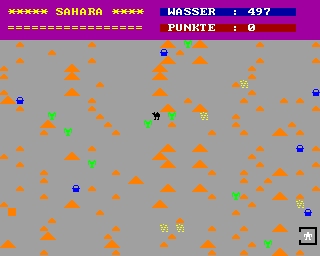CFOG's PIP, October 1988, Volume 7 No. 5, Whole No. 67, page 67
NewSweep Tutorial -- Part XI -- A Bug, A Patch, and Hard Disk Backup
by Benjamin H. Cohen
There is a bug in NSWP207.COM. It's not serious, and if you don't use "SUB" files you'll probably never run across it. CP/M's batch processor, SUBMIT.COM (and various replacements and enhanced batch processors) uses a file called "$$$.SUB" to store information on the disk while it's processing. Unfortunately, because of a coding mistake in NewSweep it won't see any files on a directory if it runs into a file whose name starts with a "$".
To fix this bug, get out DDT.COM and a copy of NewSweep. Here's what you do (some of the text below will be displayed by DDT; the rest is what you enter):
DDT NSWP207.COM
A1D7B
DCR A
.
^C
SAVE 46 NS.COM
Don't miss the period on the fourth line!
NewSweep can be patched to display video characteristics of various terminals for files with SYStem status, files that are Read Only, and files with the Archive Bit set. An article on this has also appeared in PIP, and the information circulates on various bulletin boards around the country, along with already patched copies called NSWP207Z (for Osborne) and NSWP207K (for Kaypro '84 models). [These are on CFOG's new member disks for Osborne and Kaypro users.]
If you do utilize user areas, NewSweep can log onto all user areas at one time. When invoking NewSweep or logging onto a new drive, enter "D*" for the drive and user area, and you'll get all the files on the drive. I use this for making backups on my big (2Mb) RAM disk and my hard drives. Logging onto all user areas at one time I tag all the BAK files first (and delete them). Then I tag all the files and mass copy them to a floppy disk. When the "Destination Disk Full" message comes up I mass copy to another floppy: NewSweep picks up where it stopped and continues until it fills up the next disk or is done. With two floppy drives I can keep the system going fairly quickly.
This isn't an ideal method in some respects. It is rather slow. It does no file compression (though squeezing text files would save some space it would slow things down, too). But it neatly puts every file in the correct user area for a complete restoration. I also use it for backup of a hard disk to another hard disk on one system. Two commands (tag drive A files, and copy, then tag drive B files and copy) and the whole job is done.

